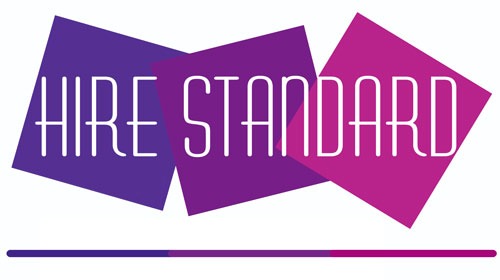CEO Chat
Helen H., CEO of
Hire Standard Staffing
Posted October 2017
We are sitting down with Helen and chatting about how office space can impact the work environment.
Q: We hear a lot about tearing down office walls to create more of an “open office space”. What are your thoughts about this trend?
A: The question of open/shared space vs. cubes and private offices is complex, and it comes down to the company’s culture: what environment are you going for, and how does your office space reflect your message or brand? Both have pluses and minuses. The open space reduces barriers potentially resulting in better communication across work groups and it can be more cost effective than work stations in cubicles. But there is a price to pay for all that openness: employees have complained about a lack of privacy and an increase in distractions. Employee activity becomes more visible to everyone (that could be either a plus or a minus depending on who is reporting!). Germs spread more easily which can mean more colds, flu, etc. But the biggest potential challenge could be “culture collision” — various groups who would not ordinarily work together are forced to interact directly which could result in unexpected internal challenges.
Q: There is another model that seems to be pretty popular, “the shared office space”. Can you share some thoughts about this particular model?
A: Shared office space is a lease arrangement between a company or individual and an executive office leasing company, which (until recently) meant a dedicated office for the lessee augmented by staff and facilities managed by the shared office services company. Smaller businesses can focus on their core functions by using the furnishings and technology infrastructure instead of having to order office furniture, get internet service and conference facilities, or hire support staff. The shared space concept has grown up, becoming “liquid space”: an even more flexible arrangement offering choices of dedicated monthly offices, hourly/daily desk rentals, communal lounge areas and kitchen facilities — even access to workout areas and spa services! — as well as areas that can be re-purposed for various events. On-site management coordinates scheduling, services, and office assignments, but clients utilizing this arrangement sacrifice input into recruiting or management of staff in the shared space office model. The lease terms can be very flexible, allowing companies to scale up or down quickly as needed. The bottom line is convenience and reduced speed of entry into your market, but at a significant monthly cost. If saving time is more important than defining your work environment, and your brand will not be marginalized in a shared space, it could be a good option. For companies who want to express their brand through design choices and curated staff members, this may not be the best choice.
Q: You have conducted your business in different office spaces. What are some things that should be taken into consideration before setting up an office space? What made you change your original office space structure?
A: There is something very seductive about having a sought-after business address, particularly in DC where first impressions are critical. As we were able to leverage technology more effectively, we needed less physical space and more flexibility. We were paying for more amenities than we used at our previous building, so for us, a professional executive offices firm made more sense. The choice was the right one for us: we can concentrate on recruiting on behalf of our clients and provide Top Tier service for our candidates — without the distraction of managing a physical space and support staff.
Q: Overall, how important do you think office space is regarding the work process? Does it depend upon the industry? The kind of Job? People?
A: Everything affects the work process! I think the key is managing expectations for everyone involved. Some people must have quiet, contemplative space to perform well, and others want a more socially engaging atmosphere where they can excel. Communication during the interview process about these issues will pay off prior to making a hire. We keep coming back to the concept of “company culture” … defining it, reflecting the culture in company business processes, and hiring employees who support company vision and processes a win-win. No, I don’t think this depends on the industry, job, or people. Discussing the type of office environment currently offered by the employer should be an interviewing topic and include buy-in of a prospective employee. And, as companies grow, getting employee feedback about the work or office space may help mold decisions about new workspace options.
Q: What was your most challenging, funny or most horrific experience regarding an office space issue?
A: I can think of two situations. One was the arrival of a homeless person into our suite in the Class A building we occupied in DC…. that was challenging. I guess our onsite security was asleep at the switch that day. Another time, the reception desk called me to greet a “visitor” on a very busy day. The visitor turned out to be a singing clown with balloons and a birthday cake that were intended for someone else…. he sang anyway, and I got to keep the cake.
Q: If money were no object and you could design your dream office space, what would you have in mind?
A: My dream office would feature individually controlled air flow, temperature and air filters to surround each person’s work space without affecting the environment of co-workers nearby. Also, self-adjusting lighting and touch screen glass privacy panels that could be engaged for meetings and then would disappear into the floor when an open atmosphere is more appropriate would be great. The desk, desk chair and monitor would automatically adjust to your body temperature and posture. Phone calls could use FaceTime-like technology at the touch of a button. Instead of a kitchen, there would be a culinary care center where chefs would prepare healthy meals based on a body scan showing stress and energy levels. Oh, and don’t forget the massage therapist waiting outside the door!

